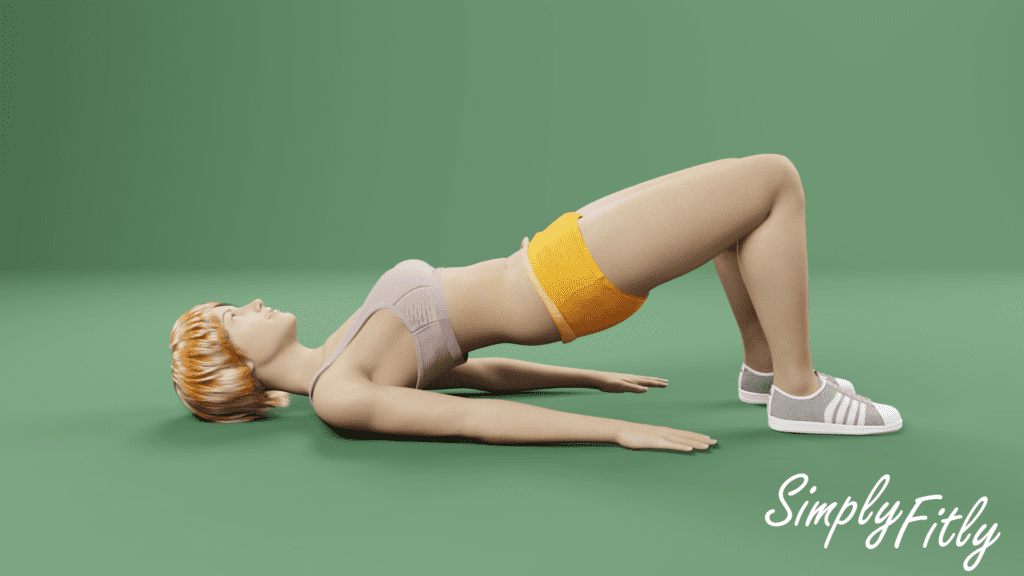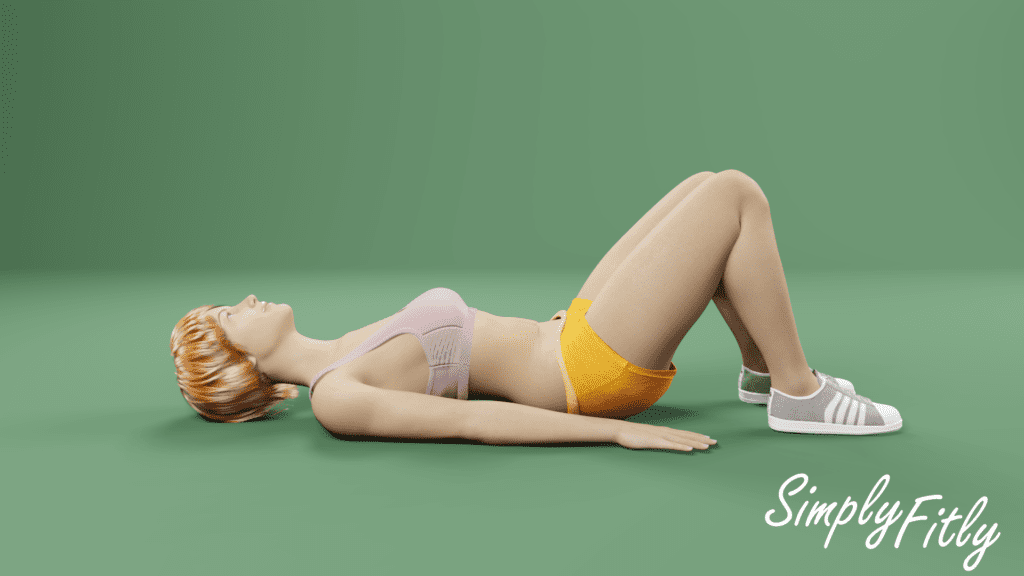
Muscle group: lower body (glutes, lower back, hamstrings), core.
Intensity: moderate.
Directions
- Lie on your back on a mat with your knees bent and feet flat on the ground, hip-width apart.
- Place arms by your sides with palms facing down.
- Engage your core muscles by pulling your belly button in toward your spine.
- Press your heels into the ground and lift hips up toward the ceiling, squeezing your glutes at the top.
- Hold the position for 2-3 seconds, then slowly lower your hips back down to the starting position.
- Repeat for 10-15 reps.


Modifications: this is the easiest modification.
Mistakes
- Allowing your knees to collapse inward: Keep your knees in line with your hips and feet to avoid putting unnecessary strain on them.
- Arching your back: Keep your core engaged and your back in a neutral position throughout the movement to avoid straining your lower back.
- Raising your hips too high: Avoid hyperextending your hips at the top of the movement, which can put extra pressure on your lower back. Instead, focus on squeezing your glutes and lifting your hips just high enough to engage your glutes.
- Planting your feet too close or too far: Your feet should be 12 inches (30 centimeters) away from your buttocks. If you put them closer or farther, you’ll put to work your hips or lower back, rather than glutes.
- Do not squeezing your buttocks: Just performing any exercise is not enough – engaging the muscle is important for strengthening them. So you have to squeeze the butt at the top to activate the muscles.
Conclusion
Glute bridge is an effective exercise that primarily targets the gluteal muscles, hamstrings, and lower back. It is a valuable addition to general fitness routines as it helps improve lower body strength, stability, and posture.
In circuit training, the glute bridge can be included to activate the glutes and lower body muscles before engaging in more intense exercises, or as a part of a circuit focused on lower body strength and stability. Its versatility makes it a valuable exercise for individuals of various fitness levels, from beginners to advanced athletes, and it can be easily modified to suit specific training goals.